Op-Ed
Museums May Not Lead Technological Innovation, But Here’s the Vital Role They Play in an A.I.-Powered Age
FAMSF director Thomas P. Campbell and cultural advisor András Szántó on what of A.I. means for arts institutions.
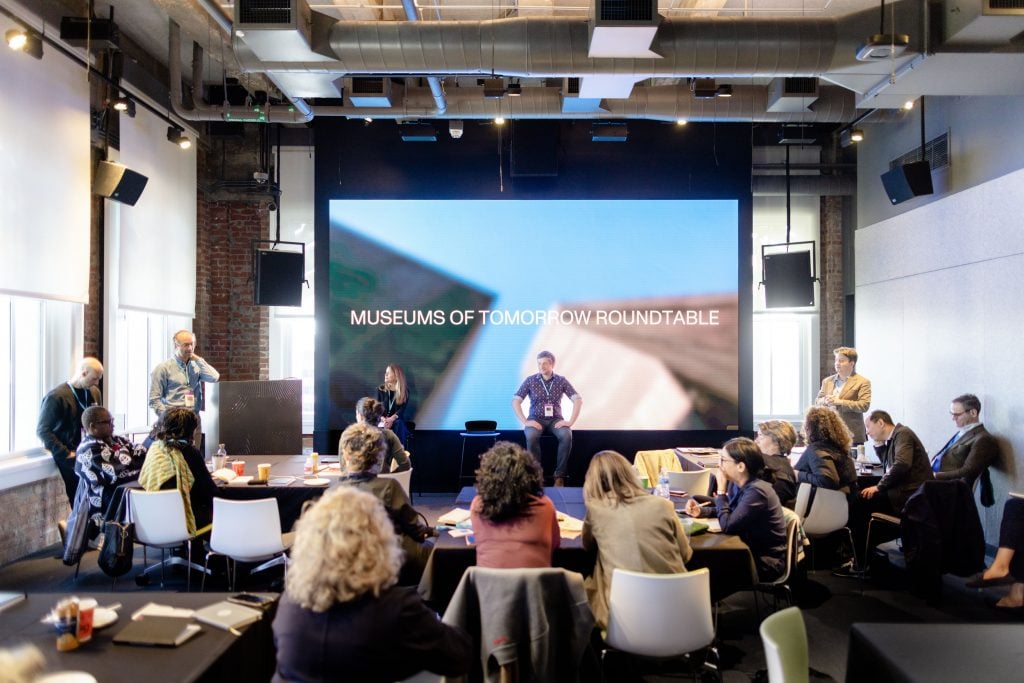
FAMSF director Thomas P. Campbell and cultural advisor András Szántó on what of A.I. means for arts institutions.

Thomas P. Campbell &
András Szántó

“Technology is a boom-and-bust industry, and you have come to San Francisco and Silicon Valley when we are simultaneously experiencing both.”
These were the words of Peter Hirshberg, a technology-world veteran, chairman and co-founder of Gray Area, a San Francisco non-profit operating at the intersection of art and technology. He was speaking on the opening day of the inaugural Museums of Tomorrow Roundtable, a weeklong meeting of museum directors from 13 points across the globe along with their Bay Area counterparts, which we organized in April under the auspices of the Fine Arts Museums of San Francisco and in partnership with five Bay Area art institutions. (A list of participating directors can be found here.)
Hirshberg was referring, of course, to the seismic impact of recent developments in generative artificial intelligence and the arrival of preternaturally astute chatbots, which have captivated the public and upended discussion around the technology world seemingly overnight.

The Museums of Tomorrow Roundtable. Photo: Gary Sexton.
We had been planning a meeting of minds around museums and technology for more than a year. By the time we got to our meetings in San Francisco, Silicon Valley, and Stanford University, the latest groundbreaking advancements in generative A.I. were commanding virtually all the attention. A sense of intertwined opportunity and anxiety hung in the air about this latest twist in the plotline of technological change.
And how will it impact art museums? This question became the unanticipated focal point of our conversations. Will the latest advances bring about a growth spurt for arts institutions, injecting new forms of creativity and arming them with powerful tools to pursue scholarship and visitor engagement? Or will A.I., along with all the widely catalogued distractions of our digitally-saturated world, trigger museums’ slow fade into oblivion, eroding their cultural authority while tomorrow’s artists and audiences gravitate elsewhere?
With participants arriving from institutions in Australia, China, Colombia, Hong Kong, India, Israel, Italy, Mexico, Morocco, Qatar, South Africa, Switzerland, Togo, as well as the United States, our discussions had the unusual advantage of including perspectives on how this story is unfolding in different parts of the world. Make no mistake: It’s almost impossible to generalize. Vast differences exist in museums’ technological capacities, no less in the contexts in which they operate. Today’s museum leaders come to this topic with highly variable levels of understanding about technological development and with equally variable perspectives on how technology can and cannot serve their communities.
For all these reasons, it’s not easy to distill general impressions from our feast of conversations. Nonetheless, we were left with three overarching takeaways.
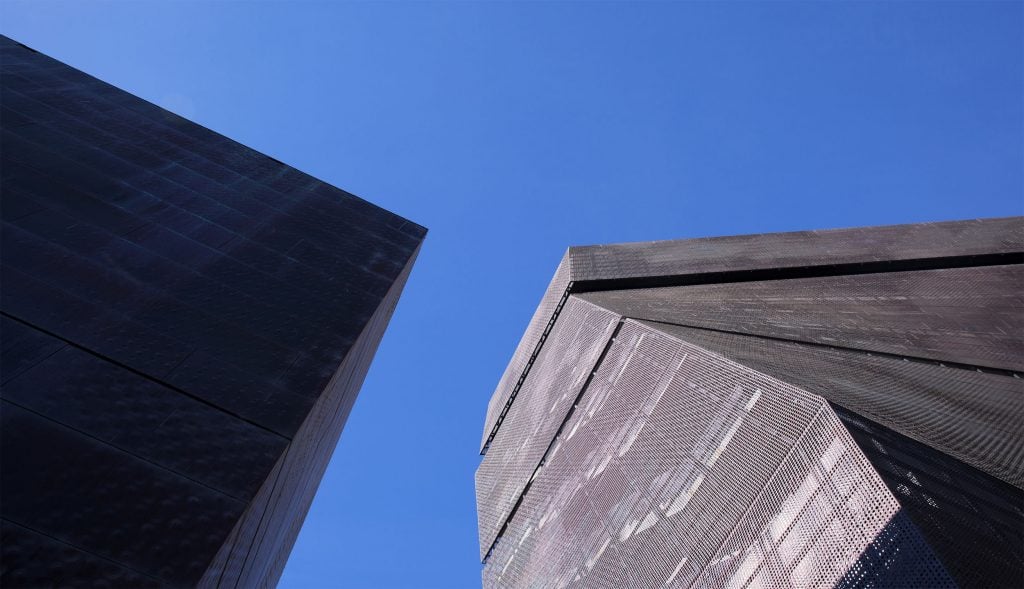
de Young Museum. Photo courtesy of FAMSF.
Our conversations hammered home how, in the years to come, artificial intelligence will have profound impact across all of society. Like other sectors reliant upon technology for many of their operations, museums will need to adapt—not just around the edges, but fundamentally.
To do so, however, they need a baseline understanding of what is happening in the technology world. The days when it was enough to put up a website or launch a social media feed to seem technologically up-to-date are over. The sophistication of the latest digital tools is moving them closer to the very heart of the museum’s curatorial and scholarly franchise. If institutions can work together, there are transformational opportunities ahead to co-present new art forms and to aggregate and make accessible the vast stores of data that our field possesses. This will require institutions to step out of their comfort zones, bring on new expertise, and engage in deep collaborations around some of their innermost processes, including data standardization and interoperability.
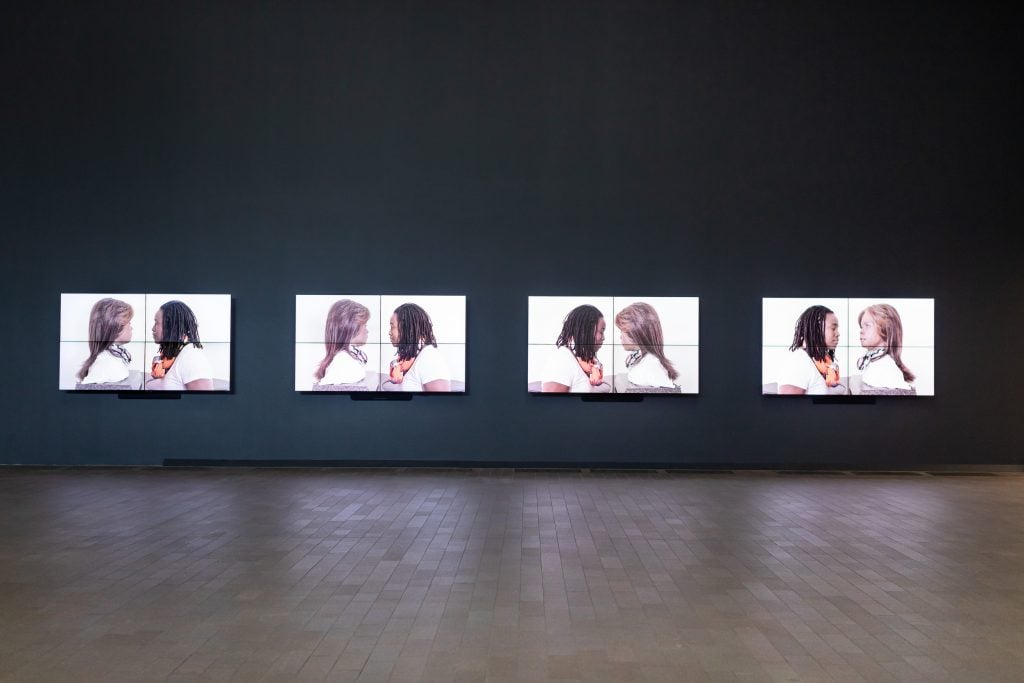
Installation view of Stephanie Dinkins, Conversations with Bina48 (2014–), in “Uncanny Valley: Being Human in the Age of A.I.” at the de Young museum. Photo courtesy of the Fine Arts Museums of San Francisco.
While artists are often the first to respond to new technologies, museums are perennially catching up—and rarely has this been more true than now. The ethos of interdisciplinary experimentation between artists, museums, and technology corporations—LACMA’s 1967–71 Art and Technology program being one historical example—continues in some new projects today. But on the whole, the motivations of the cultural sector, and museums specifically, are fundamentally different from those driving the technology industry (startups and giants alike). Museums should not delude themselves into thinking that they have agency in that vast digital ecosystem.
On the bright side, our conversations in Silicon Valley did point to areas where responsible stewards of the emerging technologies invited a two-way dialogue. Museums, along with universities, have a huge stake in making sure that the knowledge presented by nascent A.I. systems is inclusive, accurate, reliably sourced, and appropriately credited. No less important, art institutions can advocate for the protection of intellectual property in the new A.I.-driven universe. To our surprise, we heard tech insiders say as much during our meetings in Silicon Valley.
Our April meetings provided a foretaste of the increasingly urgent warnings about A.I. issuing recently from technology leaders, who seem increasingly to recognize that their industry needs some form of external regulation. Cultural institutions should seek a seat at the table in governmental policy-making and the interdisciplinary discussions around it. The museum sector’s own forums and networks—Bizot Group, ICOM, CIMAM, AAMD, AAM, etc.—need to step up.
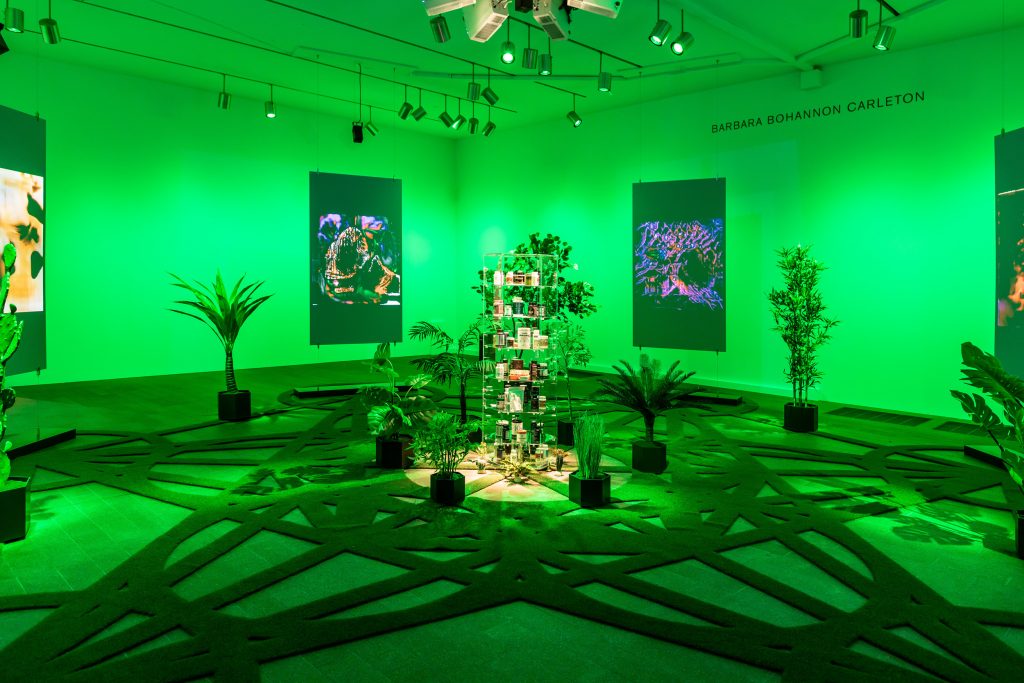
Installation view of Zach Blas, The Doors (2019) in “Uncanny Valley: Being Human in the Age of A.I.” at the de Young museum. Photo: Gary Sexton, courtesy of the Fine Arts Museums of San Francisco.
Rapid advancements in A.I. and the competitive rush to move A.I.-powered products to the market are unleashing a maelstrom of ethical quandaries. Museums have an opportunity—and perhaps an obligation—to offer their public a critical lens on this era-defining tech. We have the autonomy to facilitate critical thinking, together with artists, theorists, and others, on the immense potential and societal, economic, and cultural hazards that generative A.I. and other technologies are introducing
Since ChatGPT was released to the public in the fall of 2022, generative A.I. has often been characterized in the media in binary terms—as a harbinger of unfathomable improvements in our collective capacities or as a destructive force that can doom our future. One of the MTR participants, Seb Chan, director of ACMI in Melbourne, challenged us to think in more expansive terms: “Whilst we may be in the early stages of a quantum shift, there are multiple presents, there are multiple futures. We have agency.”
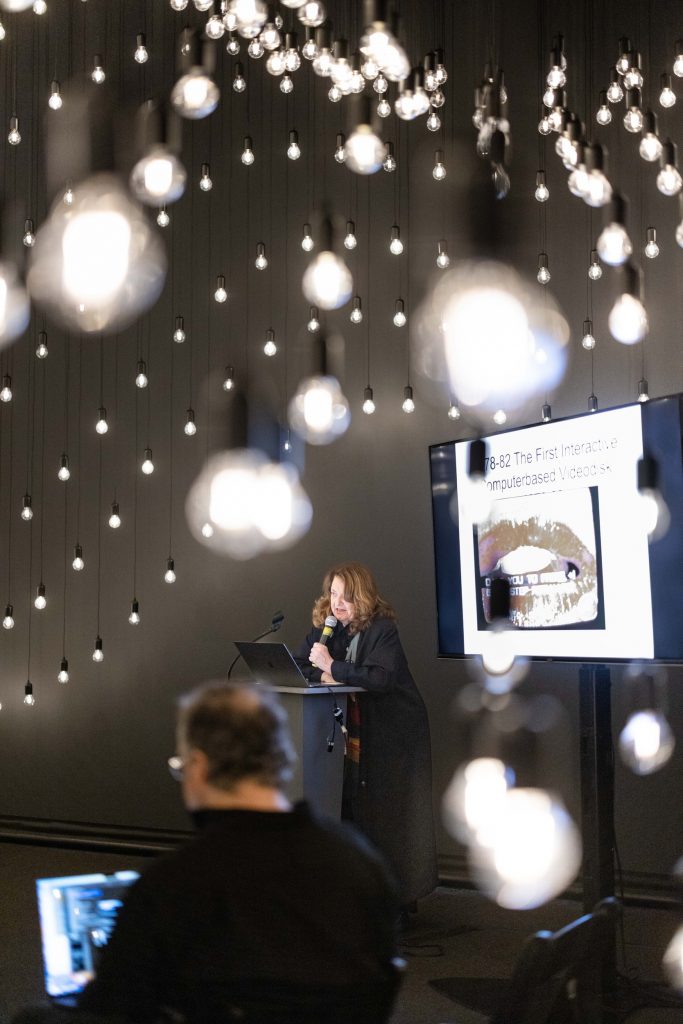
Lynn Hershman Leeson speaking at the Museums of Tomorrow Roundtable, underneath Rafael Lozano-Hemmer’s Pulse Topology (2021) with Lozano Hemmer pictured at left. Photo: Gary Sexton.
Instead of regarding A.I. as either utopian or dystopian, art museums should be asking: What is the role of a museum when it comes to disruptive technologies like A.I.? In line with Chan’s thinking, museums should engage critically and in accordance with the particular ecosystems they are operating in. As with one of our other era-defining challenges, climate change, museums can and should be where people come to terms with these perplexing developments—so long as museums themselves can get a handle on the new technology.
The good news is that artists are reliably furnishing works of great nuance and foresight that are helping us meet this transformative moment. At one point during the MTR week, we met with legendary media artist and filmmaker Lynn Hershman Leeson, who told us about the film she has been scripting with the aid of ChatGPT. The de Young museum’s exhibition, “Uncanny Valley: Being Human in the Age of A.I.,” which featured works by Leeson, Stephanie Dinkins, Trevor Paglen, and others, interrogated the underlying biases in early A.I. models—no less than two years prior to the current hubbub about artificial intelligence.
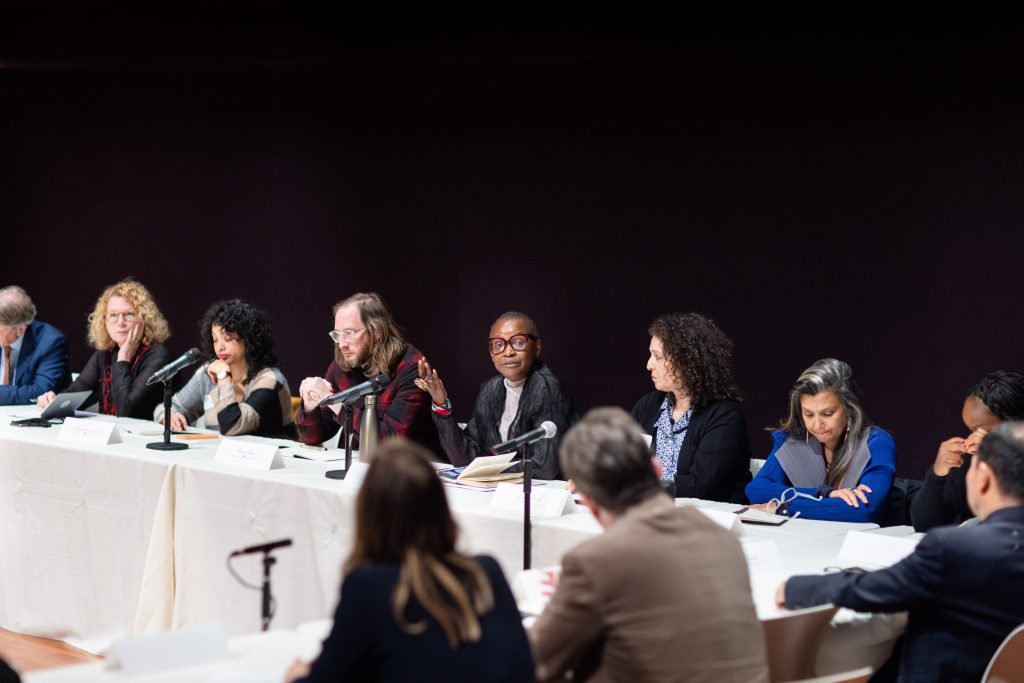
The Museums of Tomorrow Symposium at de Young Museum. Photo: Gary Sexton.
On the last day of the MTR, we gathered for a public symposium at Stanford University to explore the question: “Can technology transform systems of power within culture and its institutions?” In her presentation, Sonia Lawson, the director of the Palais de Lomé, a multidisciplinary institution housed in the palace of the former colonial rulers of Togo, in West Africa, reminded us that the museum is itself a technology—an organizational system that can act with and for communities through story building and storytelling. How then will this time-tested technology respond to the latest digital advances in artificial intelligence?
Through the ages, art has told stories on behalf of many people—kings, popes, potentates, robber barons, more recently, the liberal elite. Of late, museums have been grappling with the urgent need to radically rethink the stories we tell and to play our responsible part in moving forward an anti-racist, anti-colonialist, anti-sexist worldview. All this has been done by humans of varying knowledge levels and political stances. Now, thanks to A.I., we stand on the cusp of a moment when the prerogative of telling stories is no longer confined to sentient beings with hopes, fears, and experiences of joy and despair. Algorithms are going to increasingly populate the airwaves with artificially generated narratives.
At one level, it’s exciting to think that we can use A.I. to make our collective human story accessible to a much larger number of people than ever before, in their own language, wherever they happen to live. But the disquieting question is this: If we no longer control or even fully understand the machine that is now telling the story, do we abnegate our own central role in shaping narratives that are rooted in lived experience with at least some commonalities? The oft-heard reminder from technologists that those algorithmic narratives are none other than human-made ideas sliced and diced into new configurations doesn’t quite leave us reassured.
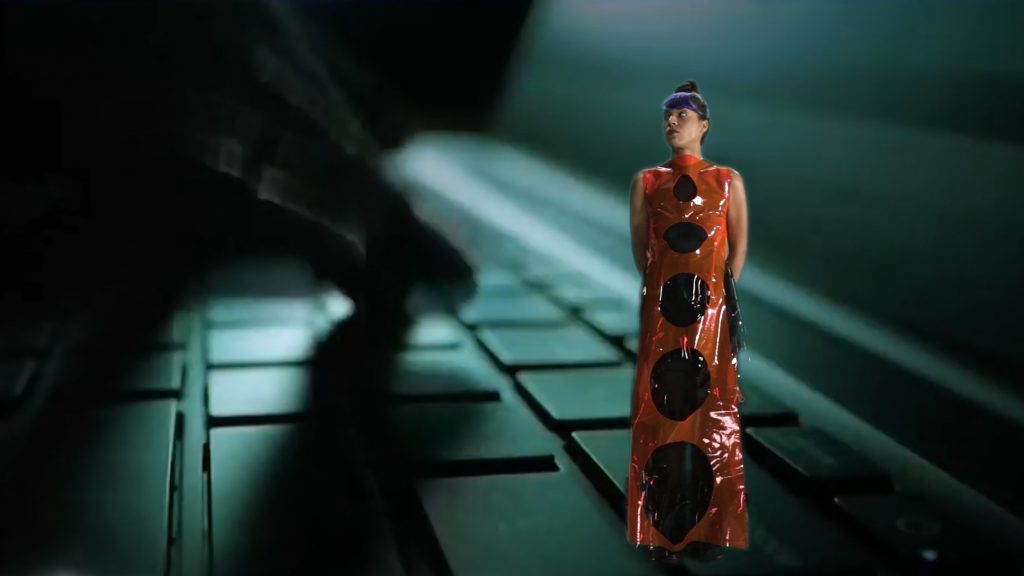
Lynn Hershman Leeson, video still from Shadowstalker (2019). Courtesy of the Fine Arts Museums of San Francisco.
Our meetings in the heart of the technology revolution, in this moment of accelerated change, did make us wonder at times whether we are becoming pawns in an enormous computing experiment. But they also reminded us of the unique responsibility that the museum has to its audiences and its communities. We should harness the new tools to tell our stories even better.
Amid the understandable anxiety about the dislocations these new technologies will bring, we need to hold fast to the fact that art museums are fundamentally places that allow us to explore human achievement across time and geography. However flawed our perspectives, human interpretation is still—and, let’s hope, will remain—a faithful measure of human agency and creativity. Culture is something us humans create together.
One of the unexpected highlights of the Museums of Tomorrow Roundtable was the sense of empathy, conviviality, and fun that developed as the assembled company got to know one another. And it culminated in a perfect metaphor for this moment, a spontaneous singalong of Aretha Franklin’s “I Will Survive” on the way home on a bus on our final evening. We didn’t all know all the words, and an A.I.-enhanced singing machine would no doubt have been more tuneful. Yet in all its imperfection, our impromptu performance was a poignant expression of the humanity that we need to cherish in our work. It was our moment, our experience, our emotions.
Thomas P. Campbell has served for over a decade as director and CEO of two major U.S. art museums—the Metropolitan Museum of Art from 2009–2017, and the Fine Arts Museums of San Francisco since 2018.
András Szántó advises museums, foundations, educational institutions, and corporations worldwide on cultural strategy and program development. His most recent book is Imagining the Future Museum: 21 Dialogues with Architects (Hatje Cantz).